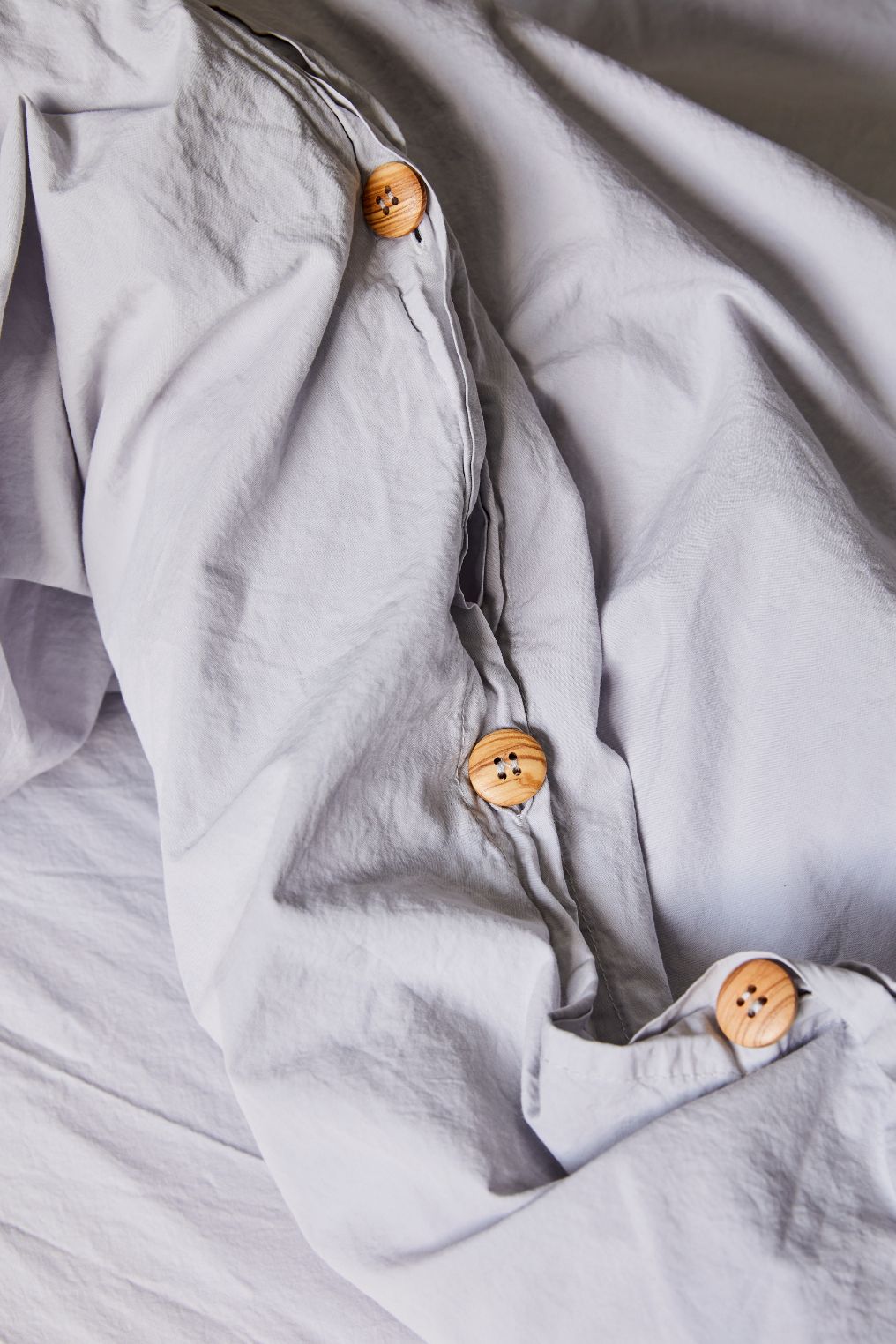365-DAY GUARANTEE | FREE SHIPPING | FREE RETURNS
365-DAY GUARANTEE | FREE SHIPPING | FREE RETURNS
365-DAY GUARANTEE | FREE SHIPPING | FREE RETURNS
Although the question “What is a duvet cover?” probably doesn’t keep you up at night, learning how to use a duvet cover can completely change your sleep quality. Knowing your bedding preferences goes a long way in getting those quality ZZZs, but you need the terminology too. So, how do duvet covers work? Let’s get to it.
Did you know that duvets and duvet covers are two separate things? Yup, that’s right. People often use the terms interchangeably, but there is a difference. Try imagining the duvet as a pillow and the cover as a pillowcase. Though the pieces work as a pair, there are two individual components.


But let’s back it up a bit. What’s a duvet anyway?
Duvets are essentially thick, fluffy blankets that lay on your bed (and on top of you). Most people use either duvets or comforters as their bedding covers of choice — but we’ll get to that in a bit. Duvet is a French word (so the T is silent) meaning “down.” And as you might guess, they often contain down feathers or a synthetic filling. However, since the duvet is just an insert, it needs the exterior piece. But how do duvet covers work? The covers are large, washable fabric pockets in which you secure your duvet inserts. Made of a much thinner, almost sheet-like material, the cover offers aesthetic value and is easy to clean. You can select organic duvet covers, or choose from an endless array of textiles, colors, and patterns — just like other bedsheets and pillowcases.
Now that we know what duvets are, we need to learn how to use a duvet cover. Though some pieces of bedding may differ between closure methods or the inclusion of corner ties, the big picture remains the same. If it’s your first time using a duvet cover, don’t be surprised it takes you a second to get the hang of it. But ultimately, it’s not too difficult. However, if you’re struggling, many folks have unique hacks that can make the process easier. We’re just going to cover the basics for now, though. Here’s how to use a duvet cover the traditional way:
Many people wonder, “What is a duvet cover?” because there’s lots of confusion around duvets, comforters, and blankets. These three bedding covers serve similar purposes but are pretty different.
Duvets are the fluffiest and warmest type of bedding cover. Made up of two pieces, they contain a removable, washable shell and a thick, somewhat weighty insert. The duvet itself is filled with down feathers or an alternative material. A downside of this bedding type is that the fill often shifts around, leading to uneven coverage. But if you ever spill something on your bed, you’ll be grateful for this detachable two-piece set. These super cozy covers are ideal for the winter months and cold sleepers.
Like duvets, comforters contain a filling. Though they’re not as fluffy, comforters solve duvets’ coverage issues through quilting. This composition holds the stuffing in smaller pockets preventing it from shifting throughout the whole piece. Comforters are also lighter than duvets and function as-is — there’s no insert or cover. However, this makes comforters more tedious to wash. If you’re a warm sleeper who enjoys a bit of weight, this may be the ideal bedding for you.
Blankets are the thinnest bedding cover and layer well over both duvets and comforters for some extra warmth. What you see is what you get here: there’s no filling whatsoever. Since they’re so lightweight, washing blankets is no trouble at all. Adding a throw to the foot of your bed is both convenient for chilly nights and immediately elevates your bedding aesthetic. But you can include blankets anywhere around your home, not just in your bedroom.

As you continue making sense of the question, “How do duvet covers work?” keep these tips and tricks in mind.
Learning how to use a duvet cover can completely change your bedding game. You can swap out these removable pieces anytime to stay on current trends or seasonal vibes. Plus, they’re super easy to wash. So gone are the days of asking, “What is a duvet cover?” You’ll become a pro in no time.
